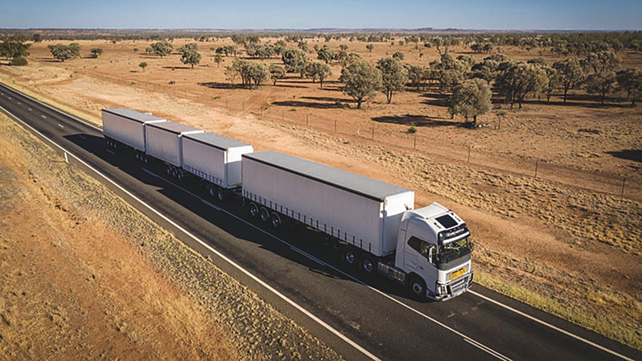
The Automotive Industry Standards Committee (AISC) has amended its AIS-113 Standard to include the safety requirements of road-trains. This development is expected to revolutionise the transport of goods and reduce overall logistic costs.
The draft standards have been published on the Ministry of Road Transport & Highway (MoRTH) website. A release issued by the Ministry said the standards have been prepared after examining European benchmarks, keeping in mind Indian operating conditions.
A road-train is a motor vehicle, wherein the traction is provided by the puller, which is connected to a serial combination of trailers or semi- trailers. Road-trains are scheduled to ply on select stretches to reduce congestion, save fuel and reduce noise & air-pollution.
The amended standard AIS-113 (Code of Practice for Type Approval of Trailers/ Semi-trailers of categories T2, T3 and T4 being towed by Motor Vehicles of categories N2 and N3) has been published for invitation of public comments, after which it shall be notified in due course.
The AISC has representatives from the relevant Ministries, testing agencies, industry stakeholders, BIS, etc.
These standards shall pave the way for a breakthrough intervention for fast and efficient movement of goods along the long-distance freight corridors, said the MoRTH release.
Additional Requirements
The draft standards also lay down additional requirements for road-trains, since these requirements are not specifically mentioned under CMVR for road-trains.
The maximum speed of the road-trains shall be limited to 80 km/h. In the case of road-trains, permission of the State government shall be obtained regarding their plying on selected routes depending upon local road conditions, width, manoeuvrability of the vehicle in traffic, as deemed fit.
Moreover, road-trains will be provided with CCTV or camera for drivers to ensure indirect vision for 360-degree vision, covering left, right and rear of the road-train. In a road-train combination, a centre axle trailer(s) shall not be used.
Road Train(s) will also need to comply with the requirements of ABS or EBS as specified in IS 11852, as amended from time to time and Vehicle Stability Function, shall comply with AIS-150 as amended from time to time, stated the standard. In addition, road train(s) shall have provision of simultaneous blinking of side marker lamps with direction indicators.
Compliance With CMVR
The draft standards note that a truck or road tractor or tractor unit for semi-trailer of category N3 complying all requirements under CMVR shall be used. In addition, it shall comply with following CMVR provisions:
- Having minimum two axles and at least half of the axles (one axle out of two in case of 2 axle vehicle; two axles out of three in the case of a three axle vehicle; and three axles out of five in the case of a five axle vehicle) designed to be driven simultaneously, irrespective of whether one powered axle can be disengaged;
- That is designed for towing exceptional load transport trailer of category T4; and
- That has a minimum power to weight ratio of 3.5 kW/tonne.